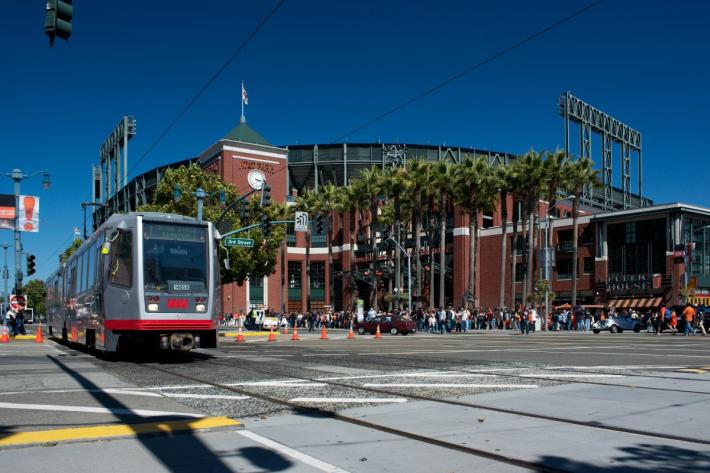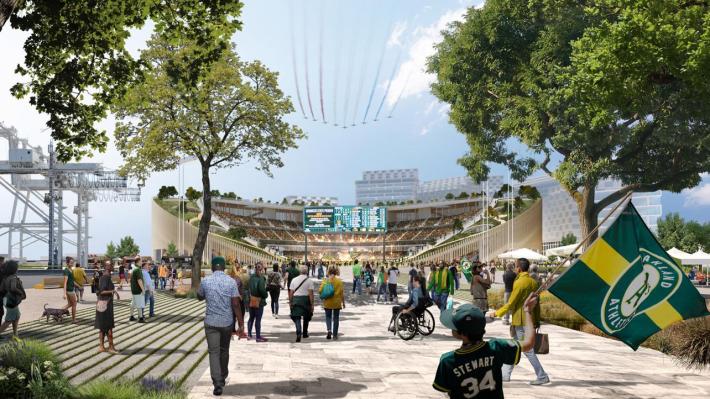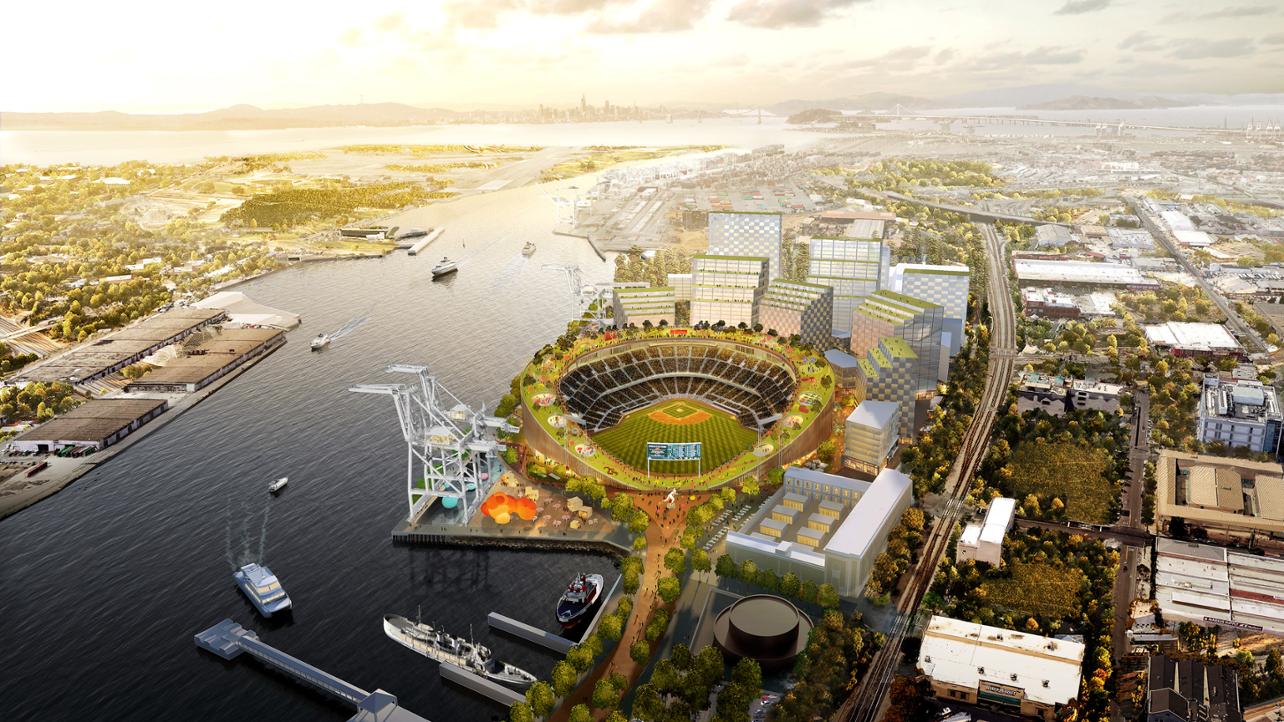Note: GJEL Accident Attorneys regularly sponsors coverage on Streetsblog San Francisco and Streetsblog California. Unless noted in the story, GJEL Accident Attorneys is not consulted for the content or editorial direction of the sponsored content.
Baseball franchises now realize the money-making, development potential of building smaller stadiums in downtown areas, surrounded by office, housing and retail, explained Fran Weld, Vice President of Development, San Francisco Giants. But "How do we have urban village ballparks," she asked, that bring together "...different aspects of a real city, such as transportation, to the public space?"

In the post-war environment, of course, baseball franchises didn't worry about such things. Instead, it was all about building stadiums in the near-suburbs with massive parking lots to store the cars that transported the fans to games. That meant acres and acres of space that sat fallow for the vast majority of the time. But then the Giant's followed a trend in New York and elsewhere to return to downtown, neighborhood ballparks.
Finding the location of today's Oracle Park was no easy task. "The location and waterfront ballpark was not always a given. We had a similar conversation in the 80s and 90s to what’s going on in Oakland now," said Weld, referring to the A's Howard Beach terminal plan, in a talk Tuesday at SPUR's Oakland location. "There were three ballot measures before the 'South Beach/China basin' ballpark."
The ballot measures looked at approving a ballpark around 7th and Division, 5th and Townsend, and even adjacent to Civic Center. The waterfront plan was eventually approved, in large part because it was to be privately funded. "And now we're the largest tenant of the Port of San Francisco," explained Weld.
The neighborhood, at the time, was almost completely empty. Over the years, as the stadium plan moved forward, so did development of office space, residences, and parks.
"You could see all of these vacant lots, now all filled in by offices houses, retail, and the hospital," said Weld. "The ballpark may have accelerated the development of the south side of town. But it certainly wasn’t the sole factor."
Today's the Giants are working on developing the last big open, parcel: lot 'A.' "Our next big vision is Mission Rock, with 28 acres, 11 buildings, 3 parks, and one pier."

Parking options are all but gone now and, said Weld, people are using BART, Muni, ferries, bikes, and their own two feet to get to the games.
On the other side of the Bay, the Oakland A's are hoping to follow the Giant's success with their new stadium and development proposal at Howard Terminal, adjacent to the Jack London neighborhood.
They have "Three overarching goals," explained the A's Lydia Tan. "To make an intimate baseball experience, embrace everything that defines Oakland, and that the investment is transformative."
Tan explained that the franchise owns the cranes and the 55 acres. The ballpark will be the cornerstone of their development plans, but that leaves 40 more acres to develop "about the same size as Mission Rock."
"There are 3,000 homes we’re hoping to build, office space, retail," she said. There's even an "old power plant were hoping to convert from jet fuel to clean battery storage." There will also be open space, including turning the back-edge of the ballpark itself into a elevated park with views of the Bay--open to the public.
They also want to extend Oakland's existing waterfront promenade directly to the back of home plate, so the stadium becomes a kind of beacon at the end of the walk.

It all sounds great, but SPUR's Oakland director, Robert Ogilvy, as well as several members of the audience, saw issues with the transportation situation around Howard Terminal. Oracle Park has a Muni rail stop right out front. Howard Terminal, on the other hand, will be nearly a mile from the closest BART station.
But Tan and Weld pointed out that Oracle Park is actually farther from the nearest BART station, and yet a good percentage of baseball fans walk rather than wait for the Muni connection. Weld pointed out that many view the walk along the waterfront as part of the experience on game day. And the Howard Terminal location has a ferry terminal and Amtrak station. And the A's plan to work out bus shuttles and bike lanes between BART and the stadium.
And what about the gondola-to-BART connection that was so prominently featured in the A's original renderings?
That was strangely absent at Tuesday's presentation--someone from the audience was quick to point that out. "It’s still there," said Tan. "We're doing work to make sure it happens."
As Streetsblog reported previously, however, it's unclear why one would build a gondola to bridge a roughly one-mile stretch of flat, unobstructed land between Oakland's downtown BART station and the stadium location. Yes, the freeway is a barrier, but surely it's easier to improve the undercrossings than build a gondola (but who knows). And what about Alameda, some 1,700 feet away on the other side of the estuary? It was basically ignored in the presentation and plans. "We're going to keep an option to extend the gondola to Alameda," said Tan when asked about it.
She also said that they are "Watching the conversation about the bike and pedestrian bridge" linking Oakland to Alameda.
For more events like these, visit SPUR’s events page.






